Related Research Articles
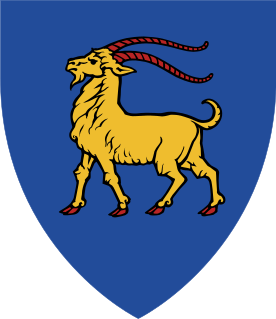
Istria, formerly Histria (Latin), Ίστρια, is the largest peninsula within the Adriatic Sea. The peninsula is located at the head of the Adriatic between the Gulf of Trieste and the Kvarner Gulf. It is shared by three countries: Croatia, Slovenia, and Italy. Croatia encapsulates most of the Istrian peninsula with its Istria County.
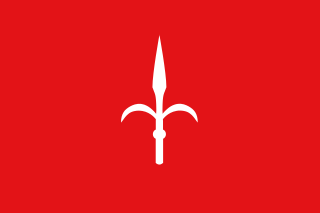
The Free Territory of Trieste was an independent territory situated in Central Europe between northern Italy and Yugoslavia, facing the north part of the Adriatic Sea, under direct responsibility of the United Nations Security Council in the aftermath of World War II. It acted essentially as a free city.

Venezia Giulia, traditionally called Julian March or Julian Venetia is an area of southeastern Europe which is currently divided among Croatia, Italy and Slovenia. The term was coined in 1863 by the Italian linguist Graziadio Isaia Ascoli, a native of the area, to demonstrate that the Austrian Littoral, Veneto, Friuli and Trentino shared a common Italian linguistic identity. Ascoli emphasized the Augustan partition of Roman Italy at the beginning of the Empire, when Venetia et Histria was Regio X.

Petar Drapšin was a Yugoslav Partisan commander.

The Austrian Littoral was a crown land (Kronland) of the Austrian Empire, established in 1849. It consisted of three regions: the Istria peninsula, Gorizia and Gradisca, and the Imperial Free City of Trieste. Throughout history, the region has been frequently contested, with parts of it controlled at various times by the Republic of Venice, Austria-Hungary, Italy, and Yugoslavia among others.

The Serbian Volunteer Corps, also known as Ljotićevci (Љотићевци) after their ideological leader Dimitrije Ljotić, was the party army of Zbor and collaborationist anti-Partisan military formation that was raised in the Territory of the Military Commander in Serbia during World War II. In July 1941, a full-scale rebellion by the communist Yugoslav Partisans and the royalist Chetniks erupted in the territory. The Germans pressured Milan Nedić's collaborationist government to deal with the uprisings under the threat of letting the armed forces of the Independent State of Croatia, Hungary, and Bulgaria occupy the territory and maintain peace and order in it. It was absorbed in the Waffen-SS in 1944 after evacuating to Slovenia, and in 1945 was rechristened the Serbian SS Corps.

The Slovene Littoral is one of the five traditional regions of Slovenia. Its name recalls the former Austrian Littoral, the Habsburg possessions on the upper Adriatic coast, which the Slovene Littoral was part of.
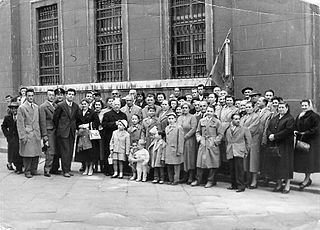
The term Istrian-Dalmatian exodus refers to the post-World War II expulsion and departure of ethnic Italians from the Yugoslav territory of Istria, as well as the cities of Zadar and Rijeka. Istria, Rijeka, and Zadar were ethnically mixed, with long-established historic Croatian, Italian, and Slovene communities. After World War I, the Kingdom of Italy annexed Istria, Rijeka, and parts of Dalmatia including Zadar. At the end of World War II, under the Allies' Treaty of peace with Italy, the former Italian territories in Istria and Dalmatia were assigned to the nation of Yugoslavia, except for the Province of Trieste. The former territories absorbed into Yugoslavia are part of present-day Croatia and Slovenia.

Croatian Littoral is a historical name for the region of Croatia comprising mostly the coastal areas between traditional Dalmatia to the south, Mountainous Croatia to the north, Istria and the Kvarner Gulf of the Adriatic Sea to the west. The term "Croatian Littoral" developed in the 18th and 19th centuries, reflecting the complex development of Croatia in historical and geographical terms.

World War II military operations in Yugoslavia began on 6 April 1941, when the Kingdom of Yugoslavia was swiftly conquered by Axis forces and partitioned between Germany, Italy, Hungary, Bulgaria and client regimes. Subsequently, a guerrilla liberation war was fought against the Axis occupying forces and their locally established puppet regimes, including the fascist Independent State of Croatia (NDH) and the Government of National Salvation in the German-occupied territory of Serbia, by the communist-led republican Yugoslav Partisans. Simultaneously, a multi-side civil war was waged between the Yugoslav communist Partisans, the Serbian royalist Chetniks, the Croatian fascist Ustashe and Home Guard, Serbian Volunteer Corps and State Guard, as well as Slovene Home Guard troops.

Plavje is a village in the City Municipality of Koper in the Littoral region of Slovenia. It is located on the northernmost edge of the Istrian peninsula, on the border with Italy, on a small hill overlooking the Gulf of Trieste.
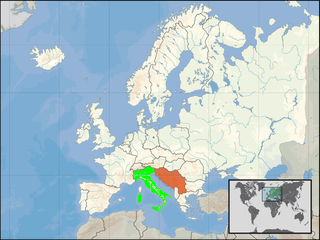
Italy–Yugoslavia relations are the cultural and political relations between Italy and Yugoslavia in the 20th century, since the creation of Yugoslavia in 1918 until its dissolution in 1992.

No. 351 Squadron RAF was a Yugoslav Partisan-manned fighter-bomber squadron of the Royal Air Force (RAF) which was operational between 13 October 1944 and 1 May 1945 during World War II. The squadron was also known by the Partisans as Second Squadron (NOVJ).

Istrian Italians are an ethnic group from the Adriatic region of Istria in modern northwestern Croatia and southwestern Slovenia. Istrian Italians descend from the original Latinized population of Roman Histria, from the Venetian-speaking settlers who settled in the region during the time of the Republic of Venice, and from the local South Slavic people who culturally assimilated.

The Dinara Division was a Chetnik division that existed during World War II. Organized in 1942 with assistance from Ilija Trifunović-Birčanin and headed by Momčilo Đujić, the division incorporated commanders in Bosnia and Herzegovina, northern Dalmatia, and the Lika region. The division was under the control of supreme Chetnik commander Draža Mihailović and received aid from Dimitrije Ljotić, leader of the Serbian Volunteer Corps, and Milan Nedić, head of the Serbian puppet Government of National Salvation.

The 8th Dalmatian Shock Corps was a corps of the Yugoslav Partisans formed on 7 October 1943. It was formed from the 9th, 19th, 20th, and 26th Dalmatian divisions. Upon creation it had 13,049 soldiers. The corps operated in the Independent State of Croatia, Governorate of Dalmatia, and Adriatic Littoral, where they fought Italians, Chetniks, the Ustaše, and Germans.
Anti-Croat sentiment is discrimination or prejudice towards Croats as an ethnic group and negative feelings towards Croatia as a country.
The Croatian Partisans, officially the National Liberation Movement in Croatia, were part of the anti-fascist National Liberational Movement in the Axis-occupied Yugoslavia which was the most effective anti-Nazi resistance movement led by Yugoslav revolutionary communists during the Second World War. NOP was under the leadership of the League of Communists of Yugoslavia (KPJ) and supported by many others, with Croatian Peasant Party members contributing to it significantly. NOP units were able to temporarily or permanently liberate large parts of Croatia from occupying forces. Based on the NOP, the Federal Republic of Croatia, which was referred to by Winston Churchill as "the Croatian miracle" was founded as a constituent of the Democratic Federal Yugoslavia.
Lika-Primorje operation was a military operation carried out by the Yugoslav Partisan 4th Army against Wehrmacht units and the Croatian Armed Forces. It was conducted in the area of Lika and Western Bosnia from March 20 to April 15, 1945.
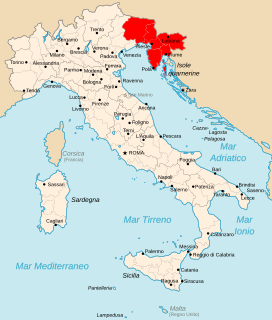
German LXXXXVII Corps was a corps in the German Army during World War II.
References
- ↑ Vojska.net
- ↑ Pavle Jakšić; Nad uspomenama I, p. 8; Rad, 1990,{It consisted of about 40,500 Croats from Dalmatia, Littoral and Istria (about 40% of the total composition of the Army), about 31,500 Serbs from Dalmatia, Herzegovina, Lika, Kordun and Banija (35% of the total composition) and 18,000 Slovenes (20% of the composition).} {https://books.google.hr/books?id=DflmAAAAMAAJ&q=PAVLE+JAK%C5%A0I%C4%86+NAD+USPOMENAMA&dq=PAVLE+JAK%C5%A0I%C4%86+NAD+USPOMENAMA&hl=hr&sa=X&ved=0ahUKEwibtYCaxN3pAhVDiYsKHQo0C80Q6AEIJjAA}